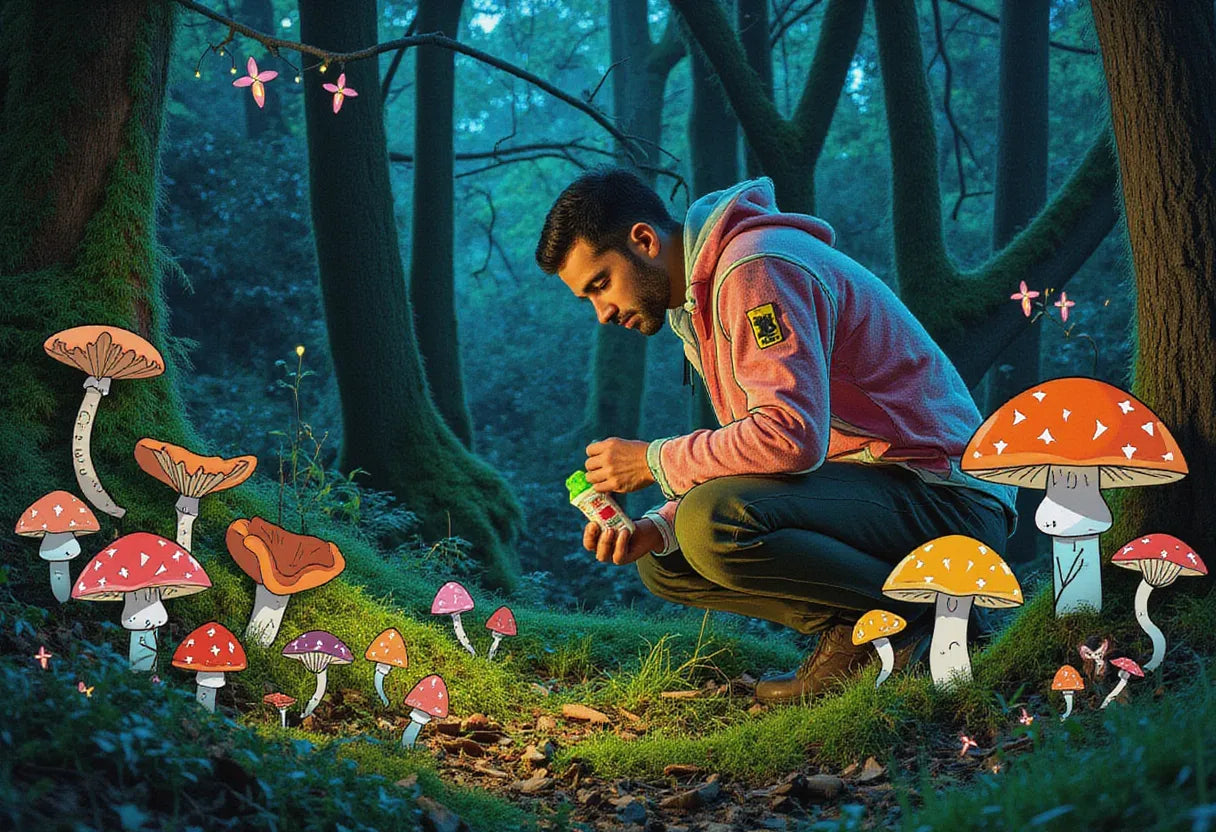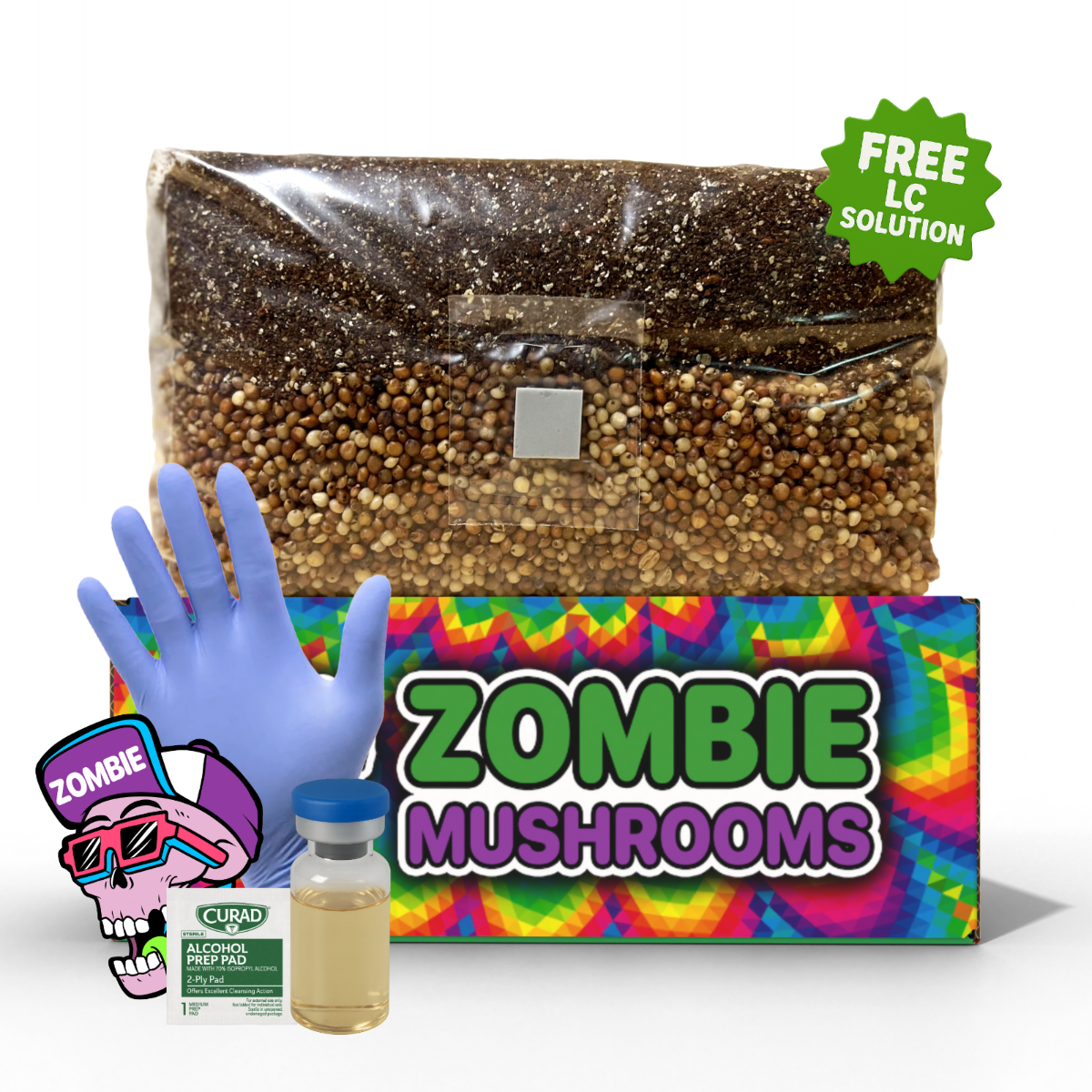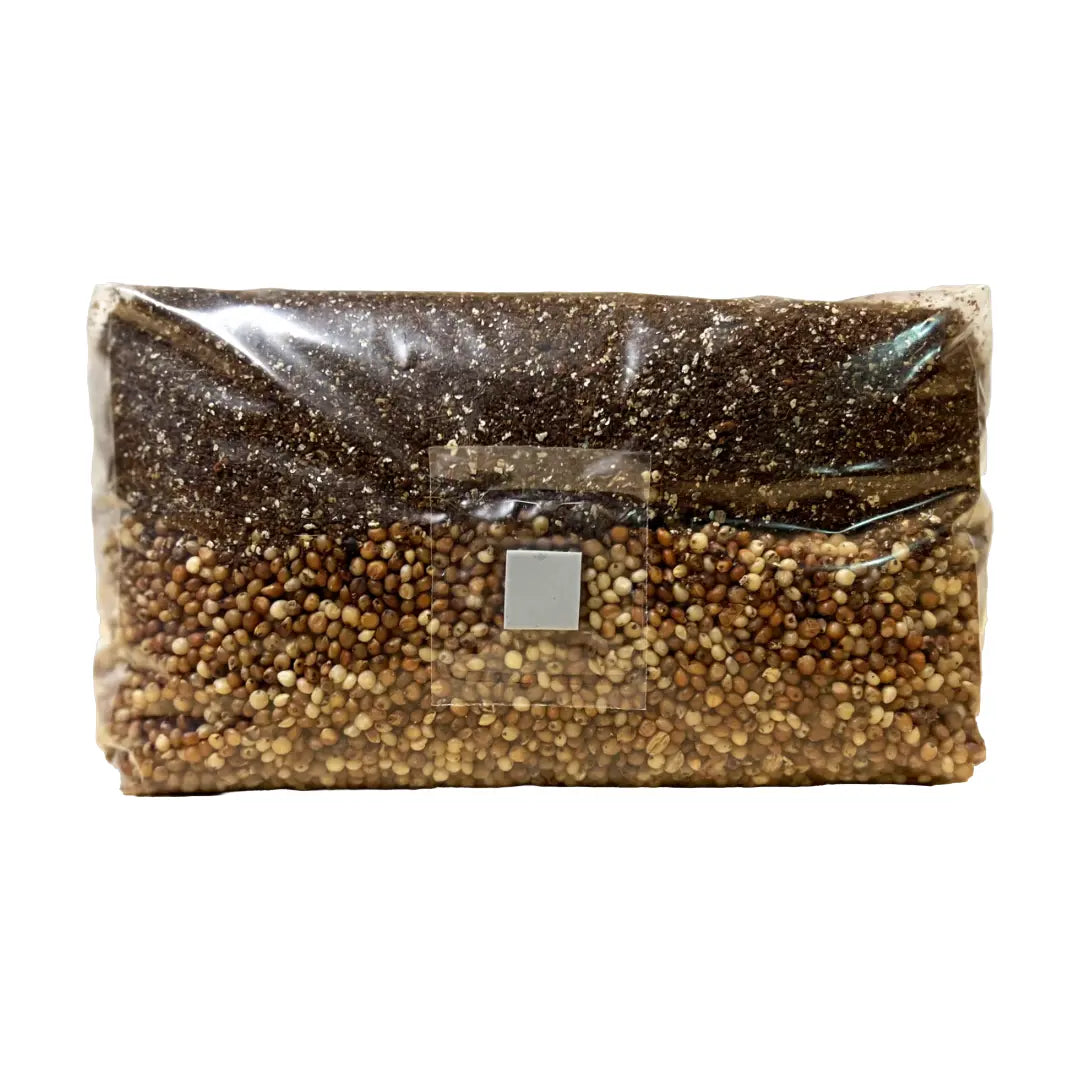⬇️ Prefer to listen instead? ⬇️

- Hydnum repandum is one of the safest foraged mushrooms due to its lack of toxic lookalikes.
- It grows in temperate forests across North America and Europe from August through November.
- Recognizable by its spiny undersides, this mushroom is ideal for beginners.
- Offers a mild, nutty flavor that holds up well in a variety of recipes.
- Sustainable foraging practices are essential to preserving its habitat and future growth.
If you're looking for a beginner-friendly wild mushroom that’s easy to identify, delicious to eat, and almost impossible to confuse with anything toxic, meet the wood hedgehog mushroom (Hydnum repandum). This quirky, spined fungus is a top pick among seasoned and new foragers alike—earning its place on dinner plates and in nature walks all over the world. For those who want the experience without the hunt, our grow bags offer a convenient way to cultivate mushrooms at home, giving you fresh, safe, and tasty harvests without foraging.

Meet the Wood Hedgehog Mushroom (Hydnum repandum)
The wood hedgehog mushroom—scientific name Hydnum repandum—is a unique type of fungus that belongs to the Hydnaceae family. Unlike many mushrooms that have gills or pores beneath their caps, this one has soft, spine-like structures that resemble tiny teeth. These spines are what give it common names like the hedgehog fungus, Sweet Tooth, and the French nickname Pied de Mouton, which means “sheep’s foot.”
Originating in temperate forests across the Northern Hemisphere, Hydnum repandum has gained popularity not only for its distinctive appearance but also for its mild taste and culinary versatility. It’s considered a prime example of an edible wild mushroom that is both safe and beginner-friendly—perfect for those just getting into foraged mushrooms.
In addition to its edibility, the wood hedgehog mushroom plays an important role in forest ecosystems. Like many wild mushrooms, it forms mycorrhizal relationships with trees, particularly hardwoods like oak and beech. This symbiosis helps trees absorb nutrients from the soil more effectively, contributing to the overall health of forest habitats.

How to Identify Hydnum repandum in the Wild
Correct identification is arguably the most crucial step in mushroom foraging. Fortunately, Hydnum repandum is relatively easy to recognize thanks to several distinct features:
Key Features:
- Cap: The cap of the wood hedgehog mushroom ranges in color from pale yellow, creamy orange, to even light brown. It often has a wavy or irregular shape that gives it a rustic appearance. With age, the edges of the cap may become more lobed and curled.
- Spines (Teeth): Its most distinguishing characteristic is found underneath the cap—soft, downward-pointing spines instead of traditional gills. These can be up to 6mm long and are typically off-white to slightly pinkish.
- Flesh: The interior is firm and ranges from white to pale yellow. It doesn’t oxidize or bruise easily, which makes field identification more reliable.
- Size: The cap can range from 3–15 cm, with some older specimens growing even larger when environmental conditions are optimal.
- Stem (Stipe): Short and stubby, usually lighter than the cap, and often off-center in placement.
Pro-Tips for Spotters:
- Search near deciduous trees like oak, beech, or even birch, but don’t overlook conifers—Hydnum repandum is flexible in its arboreal associations.
- You're more likely to find multiple specimens growing in mushroom rings, also known as fairy rings. These circular formations are a fungal growth pattern and can yield abundant harvests if spotted early.
- Look beneath leaf litter and moss; while the caps can blend into the forest floor, the unique texture and spine-covered underside are hard to mistake once seen up close.

When and Where to Forage for Wood Hedgehog Mushrooms
Where and when you look for wood hedgehog mushrooms matters. They like certain seasons and habitats.
Geographic Range:
Hydnum repandum is native to North America, Europe, and parts of Asia, thriving in temperate climates where mixed woodland ecosystems are common.
Foraging Season:
- North America: Typically found from August through November, though exact timing can shift depending on regional rainfall and temperature.
- Europe: Similar foraging windows apply, especially in the UK, Germany, France, and Scandinavian countries.
Ideal Conditions:
- Moist yet well-drained forest floors
- Rich organic leaf litter
- Shaded areas protected from direct sun
- Near healthy, mature trees
Avoid overly dry or heavily trafficked areas, as wood hedgehogs tend to recede rapidly when disturbed or when soil moisture is low.

Foraging Safety: Easy on the Eyes, Safe on the Plate
Perhaps the best feature of the wood hedgehog mushroom is its safety profile. Unlike many edible mushrooms that have toxic doppelgangers, Hydnum repandum has very few—if any—harmful lookalikes.
Harmless Cousins:
- Hydnum rufescens (Terracotta Hedgehog): Slightly smaller and redder but equally edible.
- Other Hydnum species: Most are mildly flavored and safe for cooking, though they may vary in size or color.
General Safety Tips:
- Confirm spine-covered undersides—this is the defining feature.
- Stick to wooded areas, ideally with minimal human disturbance.
- If a specimen smells bad, bruise-reacts sharply, or isn't growing from soil or leaf litter—leave it.
- Always cross-reference your finds with a reputable field guide or expert, especially as environmental changes can influence appearance.
Beginners can take comfort in the fact that this mushroom offers a “gentle learning curve” when compared to gilled mushrooms like chanterelles or morels, which can have dangerous lookalikes.

Ethical and Sustainable Mushroom Foraging
Foraging responsibly helps mushrooms like Hydnum repandum keep growing well for the future. Irresponsible harvesting damages ecosystems and depletes local populations.
Sustainable Practices:
- Use a knife to trim the mushroom at the base; this leaves the underground mycelium intact for future fruiting.
- Harvest moderately: Never clear an entire patch. Leaving at least 30% helps spore dispersal.
- Carry a breathable basket: Avoid plastic bags which trap moisture and accelerate decomposition. Baskets also help spread spores as you walk.
- Stay within regulations: Many natural reserves, parks, and protected forests have rules regarding collecting foraged mushrooms. Always check before entering.
Being a good forager means thinking about the whole forest, not just the mushrooms you pick.

Cleaning and Preparing Hydnum repandum Mushrooms
Once your basket is full, preparation begins. Hydnum repandum is relatively clean compared to more brittle species, but forest detritus can still cling to its spiny underside.
Cleaning Tips:
- In the field: Use a small knife to remove soil-covered stem ends immediately.
- At home: Use a soft mushroom brush or toothbrush to dislodge dirt from spines—avoid scrubbing too hard.
- Avoid rinsing unless absolutely necessary. If you do, give them a fast wash and pat dry immediately.
Waterlogged mushrooms lose their robust texture and subtle earthy flavor, so dry brushing is your best bet.

Cooking Ideas: Bringing the Hedgehog to the Table
Wood hedgehog mushrooms don’t need fancy treatments to shine. Their naturally nutty, rich flavor pairs well with light seasoning and simple preparation techniques.
Best Cooking Methods:
- Sautéing (Most Recommended): Enhance texture and bring out nuttiness. Cook over medium-high heat with olive oil or butter.
- Roasting: Gives spines a crisp texture with a more concentrated flavor. Excellent in grain bowls or on roasted veg platters.
- Pickling: Great for long-term storage and preserving larger hauls.
- Soup Component: Add late in the cooking process to maintain structure and flavor.
Serving Suggestions:
- On sourdough toast with garlic and thyme
- In creamy risottos or light tagliatelle pastas
- Served with herbed polenta
- As a meaty inclusion in vegetarian pot pies
Avoid pairing with spicy or strongly acidic ingredients, which can overwhelm their delicate flavors. Mixing them into something like Thai green curry might cover up their taste completely.

Flavor Profile: Mild, Nutty, and Family-Friendly
If you’re wary of earthy, pungent mushrooms, Hydnum repandum makes a lovely introduction to wild fungi cuisine.
Taste Description:
- Flavor: Mild, nutty, slightly earthy. Some tasters note a faint peppery finish.
- Texture: Firm, chewy yet tender. Doesn’t go mushy easily.
- Kid-friendly: Great for introducing children or mushroom-skeptics due to its gentle taste and versatility.
In fact, many families use wood hedgehogs as stepping stones to more adventurous fungi like chanterelles or boletes.
Making Mushroom Foraging a Family Adventure
Mushroom foraging doubles as a fun and educational outdoor activity for families. With the added benefit of exercise, ecology learning, and culinary bonding, it’s a fantastic weekend plan.
Tips for Kids:
- Create a scavenger hunt checklist for different mushrooms, leaves, and insects
- Offer small “fungi rewards” for helpful observations
- Teach them to spot spines vs gills
- Use harvesting as a chance to explain sustainability and respect for nature
One parent reported tuning their child’s screen time to mushroom finds—“Three hedgehogs? That’s 30 extra minutes of video games.” The result? A child who ended up loving mushrooms, both in the woods and on the plate.

Foraging Mistakes Are Lessons in Disguise
Even experienced foragers have off days. A common beginner error is walking away after spotting a single mushroom. Hydnum repandum tends to grow in clusters or fairy rings, so if you find one, scan the full perimeter.
Other common mistakes include:
- Damaging the mycelium by pulling instead of cutting
- Mistaking old or infested specimens for viable ones
- Ignoring legal limitations in protected areas
Every failed hunt sharpens your awareness for future successes.

Can You Grow Hedgehog Mushrooms at Home?
Absolutely—and for those without access to thriving forests, home cultivation allows you to experience foraged mushrooms without leaving your home.
At Zombie Mushrooms, we offer tools to support indoor and outdoor growing:
- Plug spawn kits for logs and stumps
- Sterile sawdust kits for greenhouse or basement setup
- Liquid cultures for the DIY enthusiast
Note: While growing wood hedgehogs is more challenging than oyster mushrooms or shiitake due to their mycorrhizal nature, modern biotechnology and symbiotic techniques are making it increasingly possible for gourmet at-home cultivation.
Final Thoughts: Should You Forage the Wood Hedgehog Mushroom?
No doubt about it—if you’re looking for a safe, tasty, and rewarding introduction to wild fungi, Hydnum repandum belongs in your basket. With its distinctive features, pleasant taste, and low risk of misidentification, it's a winning option for aspiring mycophiles of all ages.
So grab a knife, a basket, and some good hiking boots—and let the forest show you the way. Tag your finds with #ZombieHedgehogFinds, and join a movement that’s about more than harvesting—it’s about connecting with nature, one mushroom at a time.



